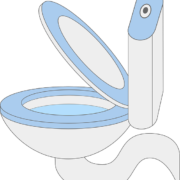Septic System Design For Attleboro, MA Property
Septic Preservation Services are providing a septic system design for a customer in Attleboro MA. All septic systems are designed specifically for their own site and have variances which make them unique but most systems are based on the same principles. A conventional septic system consists of a septic tank, a distribution box and a drainfield. Your septic system treats your household wastewater by temporarily holding it in the septic tank where heavy solids and lighter scum are allowed to separate from the wastewater. The solids stored in the tank are decomposed by bacteria and later pumped out. After partially treated wastewater leaves the tank, it flows into a distribution box, which separates this flow evenly into a network of drainfield trenches. Drainage holes at the bottom of each line allow the wastewater to drain into gravel trenches for temporary storage. This effluent then slowly seeps into the subsurface soil where it is further treated and purified. We have many years experience working in this region and know not only the state septic requirements but also those of the individual towns that we work in. Therefore we can help prevent delays for our customers which often happens if a septic design is not correct or doesn’t follow town BOH regulations. We have recently provided septic designs for customers in Berlin, Lakeville, Upton and Norton MA. If you need a septic system design or if you have septic questions please do contact our office in 877 378 4279 or visit Septic Preservation Services






